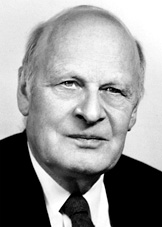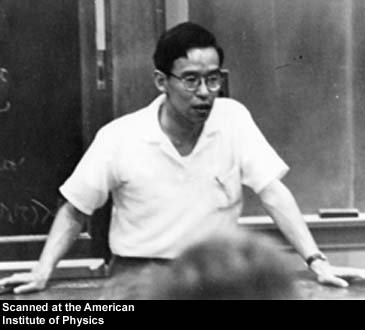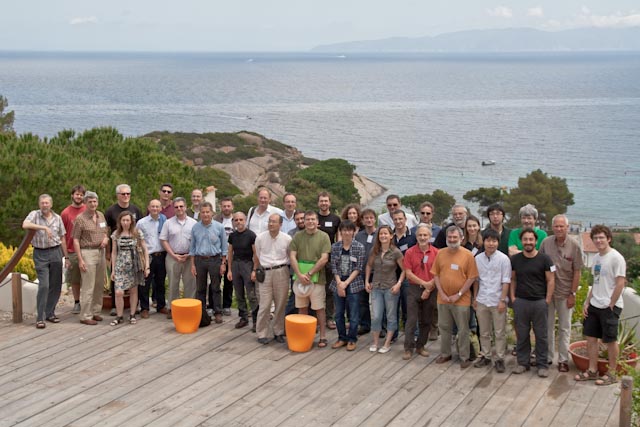 | Eighty years ago Lars Onsager published two fundamental
papers on irreversible processes. There, he generalised
a number of previous observations and conjectures (e.g. Thomson
thermoelectric theory or Helmoltz's theory of liquid junctions),
connecting - for the first time in a universal way -
relaxations and fluctuations in mesoscopic processes. |
The importance of Onsager's contribution was to recognize
time-reversal symmetry as sufficient to establish reciprocal relations
between transport coefficients, as well as a variational principle
guiding the dynamics of fluctuations. A key passage was postulating
that time-correlations obey the same equations of corresponding
macro-variables. For instance, time-correlations of local temperature
fluctuations satisfy the Fourier's law.
|
In successive years and in several different contexts, Onsager's
theory was put in contact with the theory of fluctuations - originated by Einstein's work on Brownian motion -
and with linear response theory, leading to the
Fluctuation-Dissipation relation and to the Green-Kubo formula for
transport coefficients, which both have a great value for applications
as well as a deep fundamental meaning. |  |
In Onsager's and Kubo's theories, all relations remain "simple"
provided that some kind of time-reversal symmetry holds. As soon as
such a symmetry is lost, simplicity of linear response and transport
coefficients is no more guaranteed. Time-reversal symmetry is broken
in widespread natural phenomena: a constraint against equilibration is
usually given by non-equilibrium boundary conditions. If such
boundaries are constant (or - better - their unavoidable relaxation
occurs on much larger timescales), one speaks of a non-equilibrium
stationary state (NESS). In other situations the constraint against
equilibration is given by dynamics itself which becomes exceedingly
slow, as in glassy systems. In all those cases response theory must be
generalized, paying a price in simplicity.
 | In particular,
equilibrium fluctuation dissipation relations (EFDR) predict linear
response to be proportional to an equilibrium time-correlator
involving the work done (or dissipated) by the applied
perturbation. This thermal analogy, which makes EFDR easy to be
applied, is lost when considering the perturbation of a system already
far from equilibrium, e.g. in a NESS or during aging. |
Several generalised relations (GFDR) have
been recently proposed: they still connect the perturbed system to the
unperturbed one, but require a detailed microscopic
knowledge of the system. For such a reason they are less appealing than
their equilibrium counterpart. Some GFDR may take a simple form in
particular situations, e.g. an effective temperature may replace the
thermostat temperature in a range of well separated timescales for
aging glassy systems, but this scenario is far from being
general. More frequently, one faces a situation where the EFDR is
modified by additional contributions of more complex nature.
It is the purpose of this workshop to discuss all those recent ideas,
comparing them and debating about the existence (or the reason of a
lack) of an unifying principle for non-equilibrium
fluctuation-response theory.



